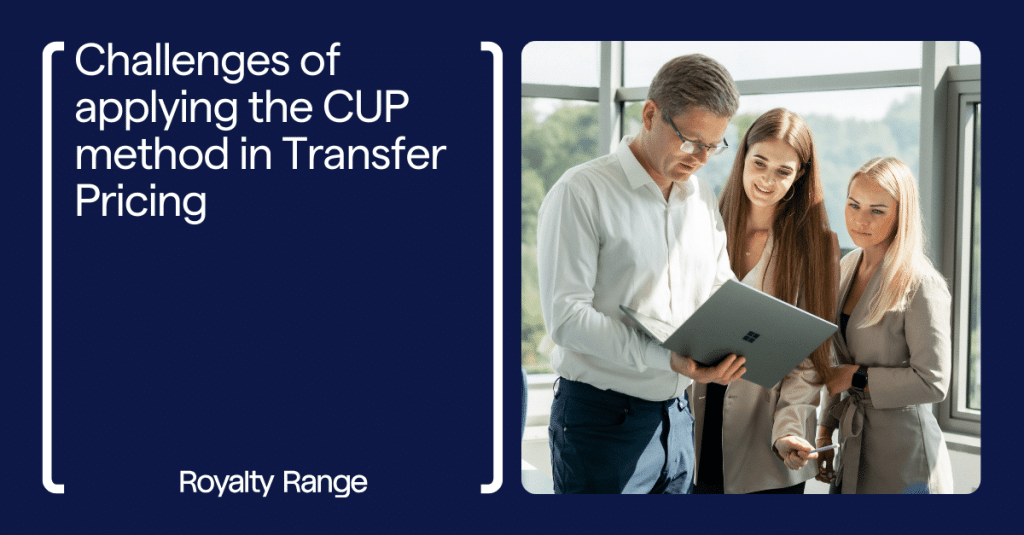Challenges of applying CUP method in Transfer Pricing
April 14, 2024

When talking about Transfer Pricing methods, the Comparable Uncontrolled Price (CUP) method is the most effective one. Let‘s find out, what are the main challenges applying this method.
The CUP method is a Transfer Pricing method used to determine whether the prices or profit margins charged in controlled transactions between related entities are at arm’s length. The basic idea behind this method is to compare the prices or margins of the controlled transactions with those of similar transactions between unrelated parties.
The OECD’s 2017 Transfer Pricing Guidelines for Multinational Enterprises and Tax Administrations define the CUP method as: “A Transfer Pricing method that compares the price for property or services transferred in a controlled transaction to the price charged for property or services transferred in a comparable uncontrolled transaction in comparable circumstances.” They call it “the most direct and reliable way to apply the arm’s length principle,” provided there are reliable comparable uncontrolled transactions available.
Here’s how the method generally works:
- Identification of Controlled and Uncontrolled Transactions: The first step is to identify the controlled transactions (transactions between related entities) that are being analyzed for Transfer Pricing purposes. Then, comparable uncontrolled transactions (transactions between unrelated parties) are identified for comparison.
- Comparable Characteristics: The controlled and uncontrolled transactions are compared based on their relevant characteristics, such as the type of property or services involved, the contractual terms, the geographic markets, the functions performed, the risks assumed, and other economically significant factors.
- Comparison of Prices or Profit Margins: The prices charged or profit margins earned in the controlled transactions are compared with those of the comparable uncontrolled transactions. If the prices or margins in the controlled transactions are within an arm’s length range of the prices or margins in the comparable uncontrolled transactions, then they are considered to be at arm’s length.
- Adjustments: If there are differences between the controlled and uncontrolled transactions that could materially affect the prices or margins, adjustments may need to be made to the data to ensure comparability. These adjustments could include adjustments for differences in functions performed, risks assumed, or other relevant factors.
- Documentation: Tax authorities often require detailed documentation to support the use of the CUP method, including documentation of the comparability analysis and any adjustments made to the data.
The CUP method is the most reliable Transfer Pricing method, if you have access to high-quality comparables data. The transaction is comparable if the differences between transactions or parties you are comparing do not have a material effect on price, and adjustments can be made to eliminate the material effect of any differences. To be arm‘s length, the price in the controlled transaction should be the same as the price in the comparable uncontrolled transaction.
One of the biggest challenges of the CUP method lies in the difficulty of finding comparable uncontrolled transactions in the light of the comparability standards that must be observed, particularly concerning the comparability of products, intellectual property, or services. It can be difficult to find transactions that are sufficiently similar to the controlled transactions being analyzed, especially in industries where transactions are complex or unique.
It’s also important to conduct a thorough comparison analysis, particularly when distinguishing between transactions taking place in spot markets and those in future markets. This distinction is vital because pricing contracts often vary between these markets. In the CUP method case, the analysis needs to be split to test the future price and the basis. The future price component could be taken from databases or agencies, for example, the price could be compared with the price established in the open market.
In flat and basis contracts, the buying price includes not only the anticipated future price of the commodity but also additional factors, collectively referred to as the basis. This basis incorporates various expenses associated with ensuring the safe delivery of the product to its destination. These expenses can include freight charges, fuel surcharges, inspection fees, fumigation costs, loading fees, shrinkage considerations, interest charges, insurance premiums, miscellaneous fees, customs brokerage fees, and storage expenses. The basis essentially represents either a premium or a discount added to the commodity’s future price and typically ranges from 10% to 30% of the commodity’s future price. In cash contracts, the buying price matches the spot price or current cash price of the commodity. Unlike flat and basis contracts, cash contracts typically involve shorter delivery times for shipments.
As adjustments to the CUPs are possible, many practitioners prefer to use an alternative method rather than apply somewhat arbitrary adjustments to a CUP, arguing that every ‘adjustment’ distances the CUP from what was agreed in the open market. Often, adjustments need to be made to the comparable data to account for differences between the controlled and uncontrolled transactions. These adjustments can be subjective and may introduce additional complexity and uncertainty into the analysis. Common errors are for taxpayers to seek to apply the CUP that derived from one or two ‘distress purchases’ or transactions outside their normal markets, or conversely to ignore apparent CUPs without explaining why they should be differentiated.
It’s important to note that during a Transfer Pricing audit, tax authorities may request that taxpayers furnish comprehensive comparability and economic analysis to validate the market value of the premium or discount associated with the commodity’s basis in flat and basis contracts. Hence, the inclusion of technology, storage solutions, and specialized software can significantly impact the process of analysis and documentation for this type of assessment. Technology enables the detailed recording of inter-company transactions, including purchase and sale contracts, evidence of premiums or discounts, invoices, and the breakdown of various variables and factors essential for analysis via the CUP method.
For effective use of the CUP method, it’s essential to use reliable comparable uncontrolled transactions. RoyaltyRange offers databases that provide the quickest, simplest, and most dependable means of accessing comparable data for your Transfer Pricing assessments. Our data is compliant with the OECD’s guidelines and is assessed against more than 50 comparability factors, ensuring that you can access relevant and current agreements to conduct a precise analysis, ultimately helping you establish arm’s length pricing for your transactions.
Ease your Transfer Pricing analyses and start a free trial of our databases today.
Sources:
https://enterslice.com/learning/comparable-uncontrolled-price-cup-method/
https://www.taxjournal.com/articles/different-methods-tp-pros-and-cons




